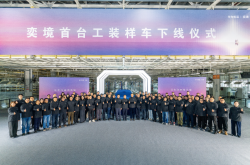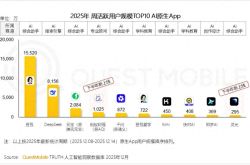Asia Auto Market | Indonesia H1 2025: Chinese Brands Shine Amidst Market Downturn
![]() 07/24 2025
07/24 2025
![]() 566
566

In the first half of 2025, the Indonesian auto market faced significant challenges, with overall sales declining by nearly 9% year-on-year. Both passenger and commercial vehicles experienced notable drops, putting pressure on Japanese brands, which collectively bore the brunt.
Despite this general market downturn, Chinese brands achieved remarkable growth, particularly in the electric vehicle segment. Sales of BYD, Chery, and SAIC-GM-Wuling surged, with some models entering the top ten for the first time, paving the way for long-term success for Chinese automakers in Indonesia.
01 Overall Decline in the Indonesian Auto Market, Pressure on Traditional Japanese Brands
Cumulative sales in the Indonesian auto market for the first half of 2025 reached 374,700 units, a decrease of 8.2% year-on-year. June sales alone plummeted 20.8% year-on-year to 57,760 units.
The retail sector mirrored this trend, with June sales at 61,617 units, down 12.2% year-on-year, and cumulative sales for the year dipping to 390,000 units.
This downturn is the result of a confluence of factors, including waning consumer confidence, external policy uncertainties, economic slowdown, and high benchmark interest rates.
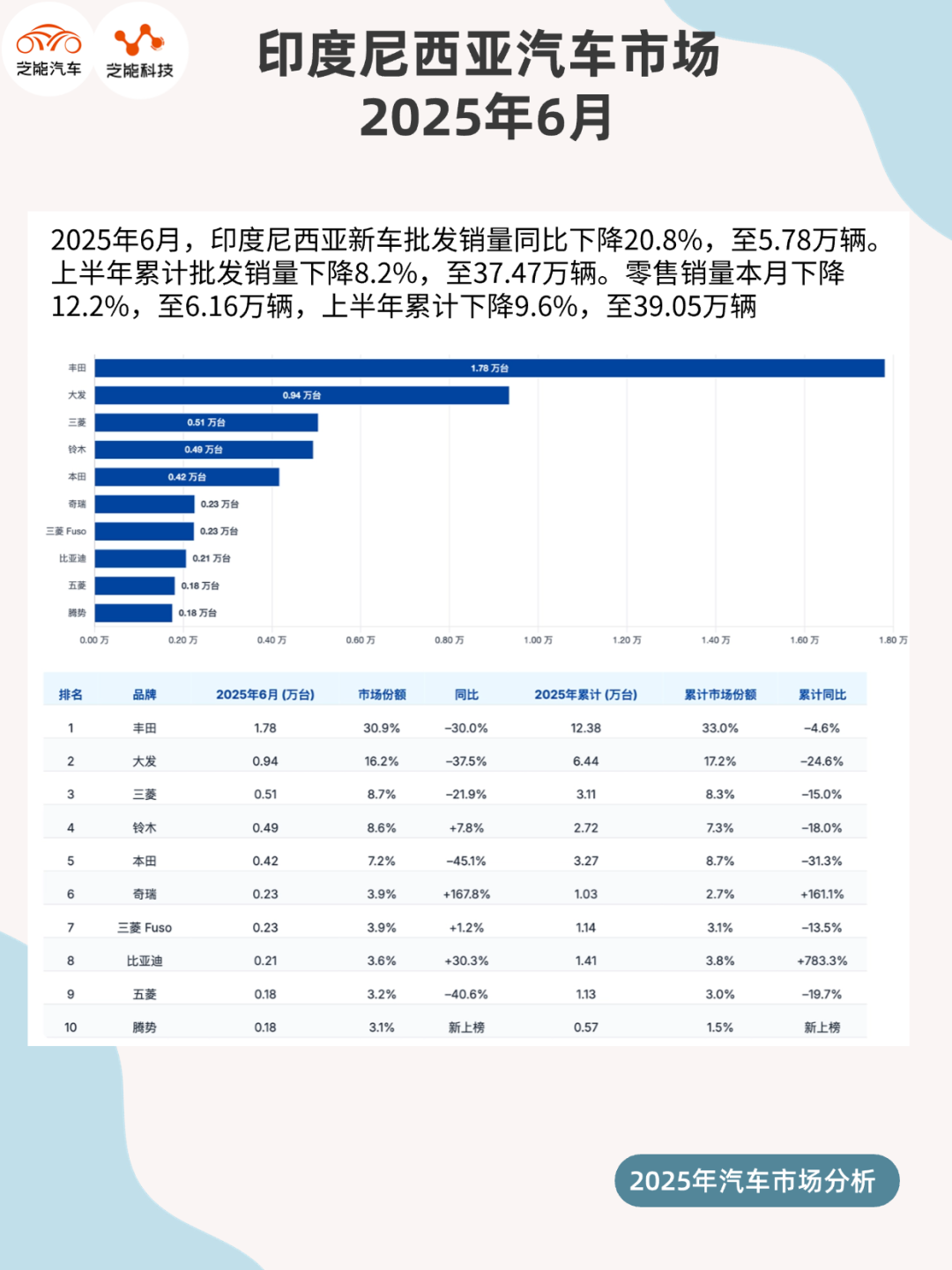
Detailed breakdown:
◎ Light passenger vehicle sales in the first half of the year totaled 292,700 units, a decline of over 8% year-on-year.
◎ Commercial vehicle sales fell to 82,000 units, a drop of more than 9% year-on-year.
◎ Even Indonesia's stalwart brand, Toyota, was affected, with sales in the first half of the year reaching 123,846 units, a decrease of 4.5% year-on-year, and June sales plummeting 30% year-on-year.
◎ Daihatsu followed closely behind but also witnessed a significant drop of 37.5%.
◎ Mitsubishi, Honda, and Suzuki experienced declines of 21.9%, 45.1%, and 18%, respectively. Honda, in particular, sold only 4,179 units in June, reflecting a decline in brand appeal and market acceptance.
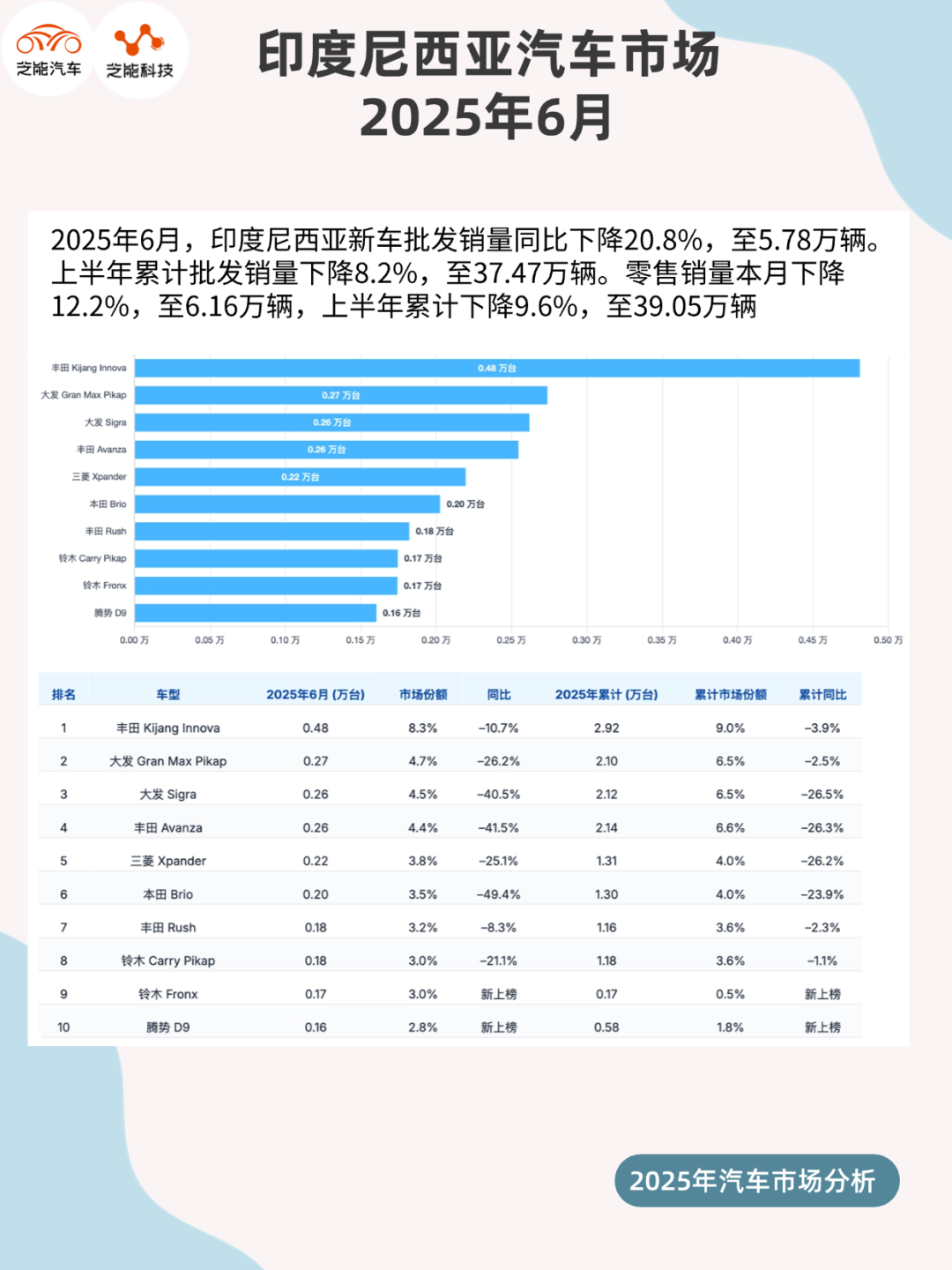
Model-wise:
◎ Toyota Kijang Innova retained its top spot with an 8.3% market share, despite a 10.7% year-on-year decline, marking it as the mainstream model with the smallest drop.
◎ Other major models such as Daihatsu Gran Max, Sigra, and Toyota Avanza all witnessed declines of more than 30%; Honda Brio plunged by nearly 50%.
◎ However, new models also made impressive inroads—Suzuki Fronx entered the top ten in its debut month, ranking ninth with a 3.1% share.
◎ Denza D9 also debuted in the top ten, showcasing the growing acceptance of high-end electric MPVs in the local market.
Historically, Japanese brands have dominated the Indonesian market, accounting for over 80% of the share. However, the first half of 2025 suggests that their dominance is being challenged, due to both external economic cycles and internal factors such as aging products and slow electrification transitions.
02 Collective Rise of Chinese Brands, New Energy Vehicles Become the Key to Breaking the Stalemate
In contrast to the overall market downturn, Chinese brands have demonstrated a starkly different performance.
Data from the first half of the year reveals that brands like BYD, Chery, SAIC-GM-Wuling, Denza, and Geely have all achieved significant growth, particularly in the pure electric vehicle market, where they have established a leading edge.
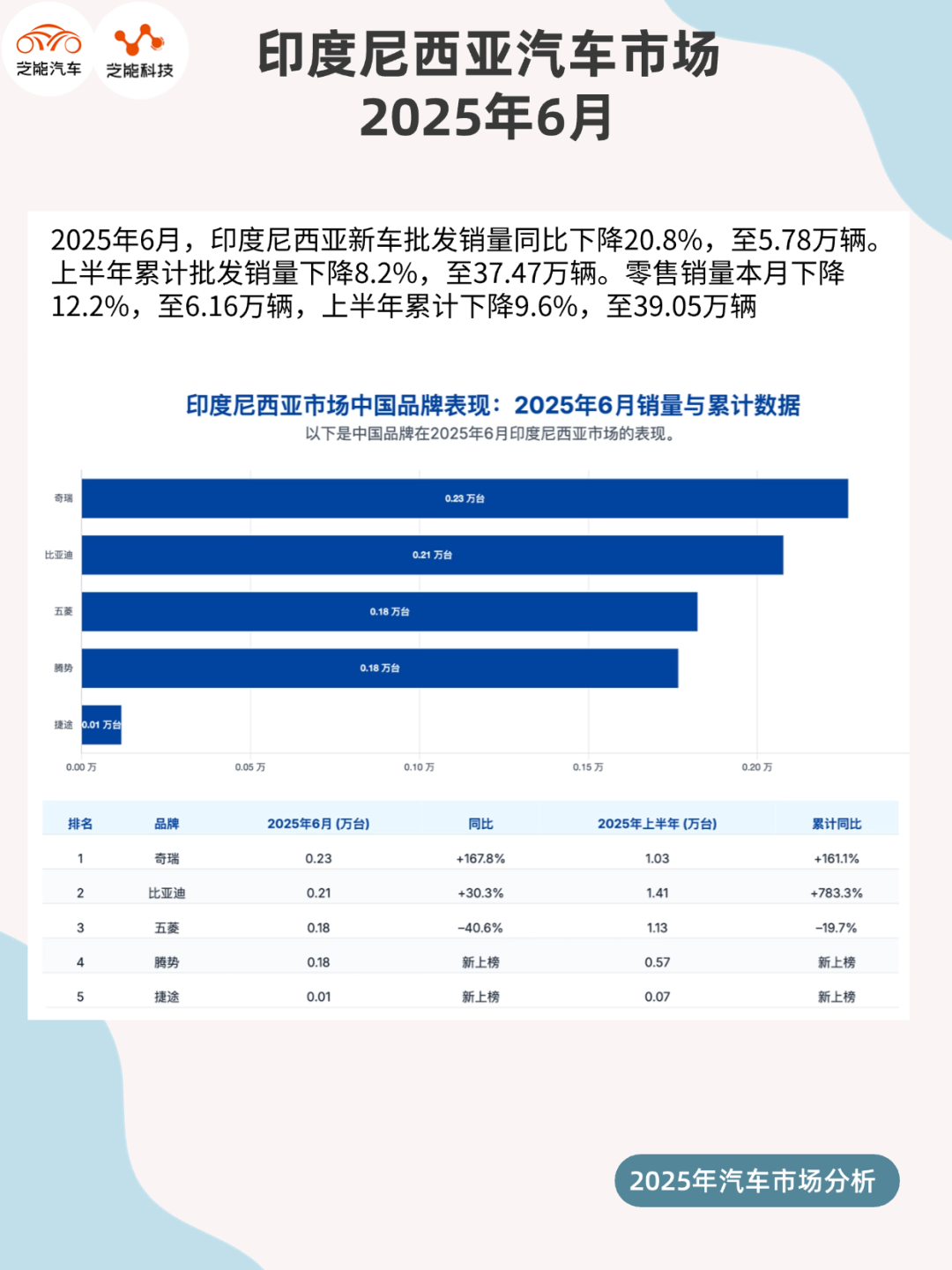
◎ BYD and its sub-brand Denza dominate the Indonesian electric vehicle market.
BYD sold 14,092 units in the first half of the year, marking a staggering 783% year-on-year increase, with June sales at 2,079 units, up 30.3% year-on-year. Denza entered the top ten for the first time in June with sales of 1,768 units, and its cumulative sales for the year reached 5,733 units, ranking third among Chinese brands, demonstrating the expansion potential of high-end electric MPVs in Southeast Asia.
◎ Chery's performance was even more remarkable, with June sales reaching 2,271 units, a surge of 167.8% year-on-year, making it the brand with the highest growth rate among the top ten. Its cumulative sales reached 10,283 units, up 161.1% year-on-year.
Chery's Omega also contributed to stable growth in the electric vehicle segment. Additionally, brands such as JETOUR, Geely, Nezha, and Great Wall, while still small in overall sales, have maintained growth trends and continue to test the local market structure.
In terms of powertrains, Chinese brands are almost exclusively focused on the pure electric route.
Statistics indicate that sales of pure electric vehicles in Indonesia in the first half of 2025 rose to 34,890 units, a significant increase from the previous year. Among them, BYD and Denza contributed 19,825 units, Wuling sold 5,170 units, and Chery/Omega accounted for 4,737 units, making up the vast majority of the total.
◎ After early market testing, Wuling won over a segment of practical consumers with its small electric vehicle products. While June sales declined year-on-year, its cumulative sales for the year still reached 8,258 units, maintaining its position in the mainstream market.
◎ New entrants such as Jaecoo and JETOUR are gradually gaining popularity locally, particularly in the increasingly saturated traditional gasoline vehicle market. They are building user bases by introducing innovative designs, advanced technologies, and smart configurations.
◎ Brands like Aion, Geely, and Nezha have also begun to appear on sales charts. While their volumes are still small, their growth trends are unmistakable.
Behind the collective rise of Chinese automakers lies their accurate judgment of Indonesian market trends.
The Indonesian government is accelerating the implementation of local electric vehicle industry policies and promoting the construction of battery factories and charging infrastructure, providing favorable external conditions for Chinese automakers. Compared to traditional Japanese brands, Chinese brands offer distinct advantages in electrification, intelligence, and flexibility in price ranges.
Summary
As Indonesia, the largest auto market in Southeast Asia, undergoes a cyclical correction, Chinese brands are defying the trend. Brands such as BYD and Chery have entered the mainstream, expanding their product mix from small commuter cars to high-end MPVs and SUVs.
With the continuous advancement of local electrification policies, more Chinese automakers will achieve localized production and operational coordination in Indonesia, further expanding their market share. For Japanese brands, which have long dominated the market, the challenge posed by Chinese competitors cannot be overlooked.





